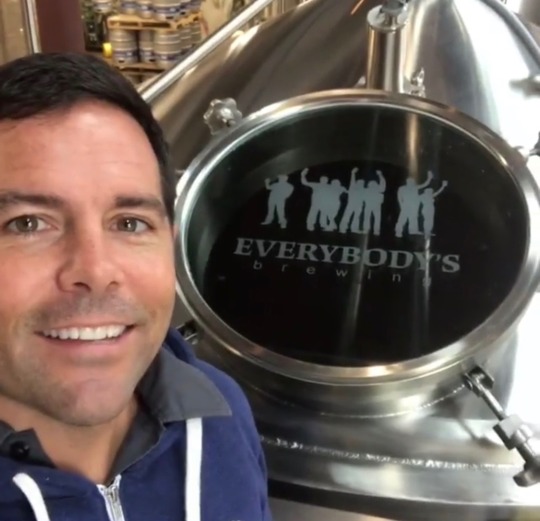A Collab That Crosses an Ocean and Takes Us Back In Time
Share
Kveik: The beer that's as fun to say as it is to drink!
Let’s get a couple things straight:
- Kveik is not actually the style of beer, but rather the yeast strain used by Norwegian brewers to ferment their farmhouse ales.
- It’s pronounced “kah-veek” - a word that comes from a specific Norwegian dialect and in English translates to “yeast.”
- It’s super fun to say. Give it a try, we think you’ll agree!

Steve, the Owner and Head Brewer at Lanikai Brewing.
By The Powers Of Kviek
Most modern breweries typically use a single yeast stain, controlled and propagated in a lab to make consistent-tasting beer over time. Back in the day, cavemen were too busy fighting dinosaurs and shopping the latest loincloth trends to spend much time in the lab. Instead, they used and reused the same yeast, which often contained many different strains. In Norway, these strains were stored by drying them out using a circular, wooden rack. They passed down these strains from one family brewer to the next. These strains were brought back to life from their dried state when added to the next wort.
This stuff is unique and incredible. It differs from other strains in lots of ways: It works at much higher temperatures, ferments quickly, and gives off incredibly fruity esters. It also tends to fall out of suspension quickly, and most notably, it can be dried and reused.

Everybody’s HI
Making this beer was not light duty; these strains are pretty difficult to come by. We got ours from Sean Sleight at Sleight Labs in Seattle. In fact, he got us three Kveik strains! We needed more than one if we were going to mimic this ancient style. Sleight Labs sent the strains to our friends at Imperial Yeast in Portland. Imperial is a terrific company, and they were pumped to help propagate the Kviek to a suitable volume. A few weeks later, we had enough Kveik to feed an army!
Aloha from Lanikai
When friend and owner of Lanikai brewing, Steve Haumschild, asked us to collaborate on a beer, we jumped at the opportunity! Lanikai makes quality, innovative, Hawaiian-inspired beers, AND we figured we’d get a trip to Oahu out of the deal. Turns out he was looking for a reason to visit our new brewery in White Salmon. Alas, we agreed to brew it here in Washington. He loved the idea of a Norwegian Farmhouse and he offered a twist…bring a Lactobacillus bacteria strain naturally harvested from his farm in Hawaii and use it to sour the beer. A tart Farmhouse? Boom!
There are lots of Lacto stains in the world and we wanted to know what we were working with. We sent his Hawaiian born bacteria back to Imperial Labs. They isolated it and identified it as Lactobacilis fermentum. Woah baby, what a rare find! We were stoked! They grew it up to a useable size, and we were ready to get brewing.
The Final Product:
We wrote a grain bill that was Two-row malt, wheat, and some flaked corn. The wheat gives it a light haze and helps soften and balance the body. We soured it with the Hawaiian Lacto for a full three days, at 105 degrees. It dropped from a pH of 5.2 down to 3.3. While this is not consistent with a traditional Norwegian Farmhouse, it is consistent with our penchant for trying new and awesome things. Turns out we were right!
We then fermented it with the Kviek yeast blend at 90 degrees (25 degrees hotter than we’d normally ferment our house ale strain) for only four days. Normally, fermenting at a temperature this high would result in beer that tastes absolute sh*t, but with this Kviek blend, the beer was quickly blowing up with big-time fruity, pineapple notes. It’s got a slight farmhouse funk, with a nice, tart finish.
The Next Step:
After the brew, we had some fun harvesting and drying the yeast in the tradition of the Norwegian farmhouse brewing style. We plan on running some experimental ferments at the brewery to see how well this storage process works. With any luck, we’ll have some new, exciting farmhouse beers on tap soon.
Mahalo!
